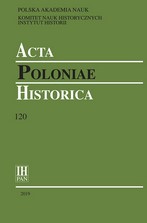THE ENEMY AND THE VICTIM: STRAY DOGS IN POLAND, 1945–70 (DISCOURSES AND ACTIONS)
THE ENEMY AND THE VICTIM: STRAY DOGS IN POLAND, 1945–70 (DISCOURSES AND ACTIONS)
Author(s): Dariusz JaroszContributor(s): Tristan Korecki (Translator)
Subject(s): Victimology, WW II and following years (1940 - 1949), Post-War period (1950 - 1989)
Published by: Instytut Historii im. Tadeusza Manteuffla Polskiej Akademii Nauk
Keywords: animal studies; People’s Republic of Poland; history of animals; dogs; dog-pounds; animal shelters;
Summary/Abstract: The article argues that two primary roles were prevalently identified for dogs in the period concerned: for one thing, dogs were perceived as objects of human malevolence or at least dislike; this had to do with the dissemination of disease – particularly, rabies, dangerous to humans. For another, the dog was represented as a victim of cruelty. The exchange of arguments between adherents of different solutions to the ‘canine question’ (dog-pounds and culling vs. shelters) grew emotion-imbued, especially in the late 1950s and early 1960s. The press published voices of protest against mass killings of dogs and reinstatement of dogcatcher’s establishments. Eminent scientists, artists, cultural workers sent requests or appeals in these respects to the authorities. This ‘canine campaign’ led to the adoption, in 1961–2, of legal acts designed to make the methods of dealing with homeless animals ‘civilised’, but they did not bring about a breakthrough in the way dogs were treated or dealt with in post-war Poland. The campaign demonstrated that an active group of dog lovers got formed in the People’s Republic. In this sense, it can be said that dogs became an object of human care (the latter topic not having been subject to the research on which the following text is based).
Journal: Acta Poloniae Historica
- Issue Year: 2019
- Issue No: 120
- Page Range: 113-136
- Page Count: 24
- Language: English

